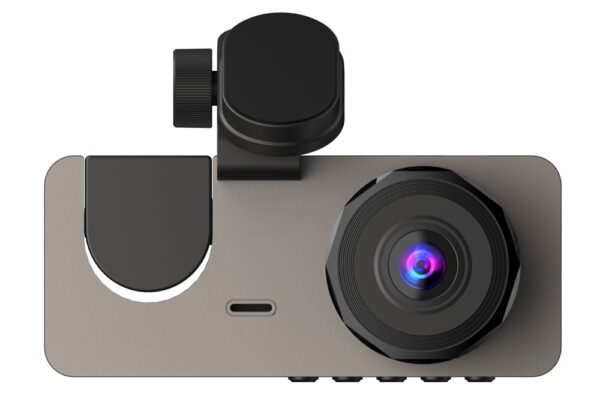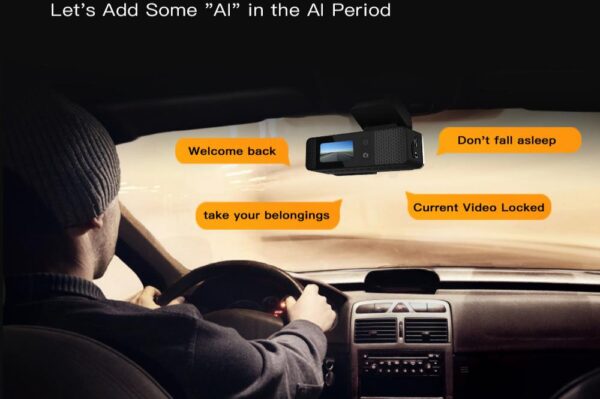A 360 vehicle camera, also known as a surround-view or bird’s-eye view camera, is a system designed to enhance driving safety by providing drivers with a comprehensive, real-time view of their vehicle’s surroundings. This technology helps eliminate blind spots and aids in parking, navigating tight spaces, and avoiding obstacles. Here’s an overview of how a 360 vehicle camera works and its key components.
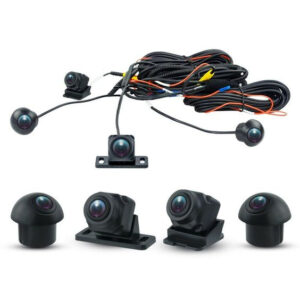
1. Overview of a 360 Vehicle Camera System
The 360 vehicle camera system uses multiple cameras strategically placed around the car. Typically, four wide-angle cameras are positioned at the front, rear, and sides of the vehicle. These cameras capture real-time video footage and stitch them together to create a seamless bird’s-eye view of the vehicle’s surroundings.
Key components include:
- Front camera: Usually located in the front grille or bumper, it captures the area in front of the vehicle.
- Rear camera: Positioned near the rear license plate or bumper, providing a view of the area behind the vehicle.
- Side cameras: Mounted under the side mirrors, these cameras offer a wide-angle view of the vehicle’s sides.
- Control unit: The brain of the system, it processes the video feeds from all cameras, merging them into a single 360-degree image.
2. How It Works: Step-by-Step Breakdown
Step 1: Capturing Video
Each of the cameras around the vehicle captures high-resolution, wide-angle video. Since each camera has a specific viewing angle (usually 180 degrees), it covers a different segment of the vehicle’s surroundings.
Step 2: Processing the Images
The captured images from each camera are fed into the control unit, where advanced software processes and merges the footage. This stitching process uses overlapping areas between the camera feeds to create a continuous, panoramic image.
Step 3: Creating the Bird’s-Eye View
Once the images are stitched together, the system displays a bird’s-eye view or top-down view of the vehicle on the car’s infotainment screen. This provides drivers with a real-time, 360-degree visual of their vehicle as if they were looking down from above.
Step 4: Real-Time Feedback and Guidance
As the vehicle moves, the 360 camera system updates the view in real-time, helping drivers monitor blind spots, avoid obstacles, and park with precision. Some systems also overlay guidelines on the display, showing the vehicle’s projected path to further assist in maneuvering.
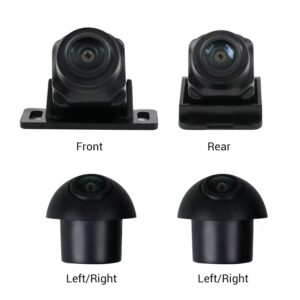
3. Benefits of a 360 Vehicle Camera
The primary benefit of a 360 vehicle camera is enhanced safety. By providing a complete view of the surroundings, it reduces the risk of collisions, especially in tight spaces. Some specific advantages include:
- Elimination of Blind Spots: Traditional mirrors and standard rearview cameras often leave blind spots. A 360 camera covers every angle, ensuring there are no unseen areas around the vehicle.
- Simplified Parking: Parallel parking and navigating through narrow spaces become much easier as the system gives a clear view of the vehicle’s position relative to curbs and other objects.
- Obstacle Detection: The system helps drivers avoid obstacles that may not be visible from the driver’s seat, such as low-lying objects or pedestrians.
- Enhanced Night Vision: Many 360 vehicle cameras are equipped with night vision capabilities, ensuring that the driver can still see the surroundings clearly in low-light conditions.
4. Additional Features of Modern 360 Camera Systems
- Split-Screen Views: Some systems allow drivers to switch between different camera views, such as front, rear, or side views.
- Moving Object Detection: Advanced 360 camera systems can detect moving objects and alert the driver if a pedestrian or another vehicle is nearby.
- Integration with Parking Sensors: Many systems integrate with parking sensors to provide both visual and auditory feedback to the driver, enhancing safety when maneuvering in tight spots.
5. How a 360 Vehicle Camera Enhances Driving Experience
A 360 vehicle camera system can greatly improve a driver’s confidence, particularly in urban environments or tight spaces. Whether parking in a crowded lot, navigating narrow streets, or reversing in a busy area, the comprehensive view offered by the system ensures drivers have full control of their surroundings, reducing the likelihood of accidents.
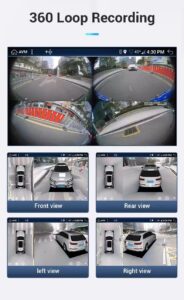
Conclusion
A 360 vehicle camera system offers a significant improvement in vehicle safety and convenience. By combining multiple camera feeds into one cohesive view, it provides drivers with a clear, real-time view of their surroundings, eliminating blind spots and making driving in tight spaces easier. With continuous advancements in automotive technology, these systems are becoming a common feature in modern vehicles, enhancing road safety for both drivers and pedestrians alike.

